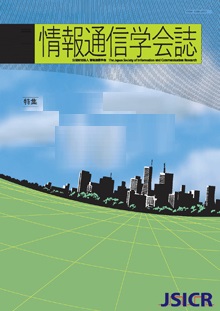Volume 39, Issue 4
Displaying 1-4 of 4 articles from this issue
- |<
- <
- 1
- >
- >|
-
2022Volume 39Issue 4 Pages 95-109
Published: 2022
Released on J-STAGE: April 29, 2022
Download PDF (1806K)
-
2022Volume 39Issue 4 Pages 111-118
Published: 2022
Released on J-STAGE: April 29, 2022
Download PDF (615K) -
2022Volume 39Issue 4 Pages 119-126
Published: 2022
Released on J-STAGE: April 29, 2022
Download PDF (540K)
-
2022Volume 39Issue 4 Pages 127-131
Published: 2022
Released on J-STAGE: April 29, 2022
Download PDF (709K)
- |<
- <
- 1
- >
- >|
